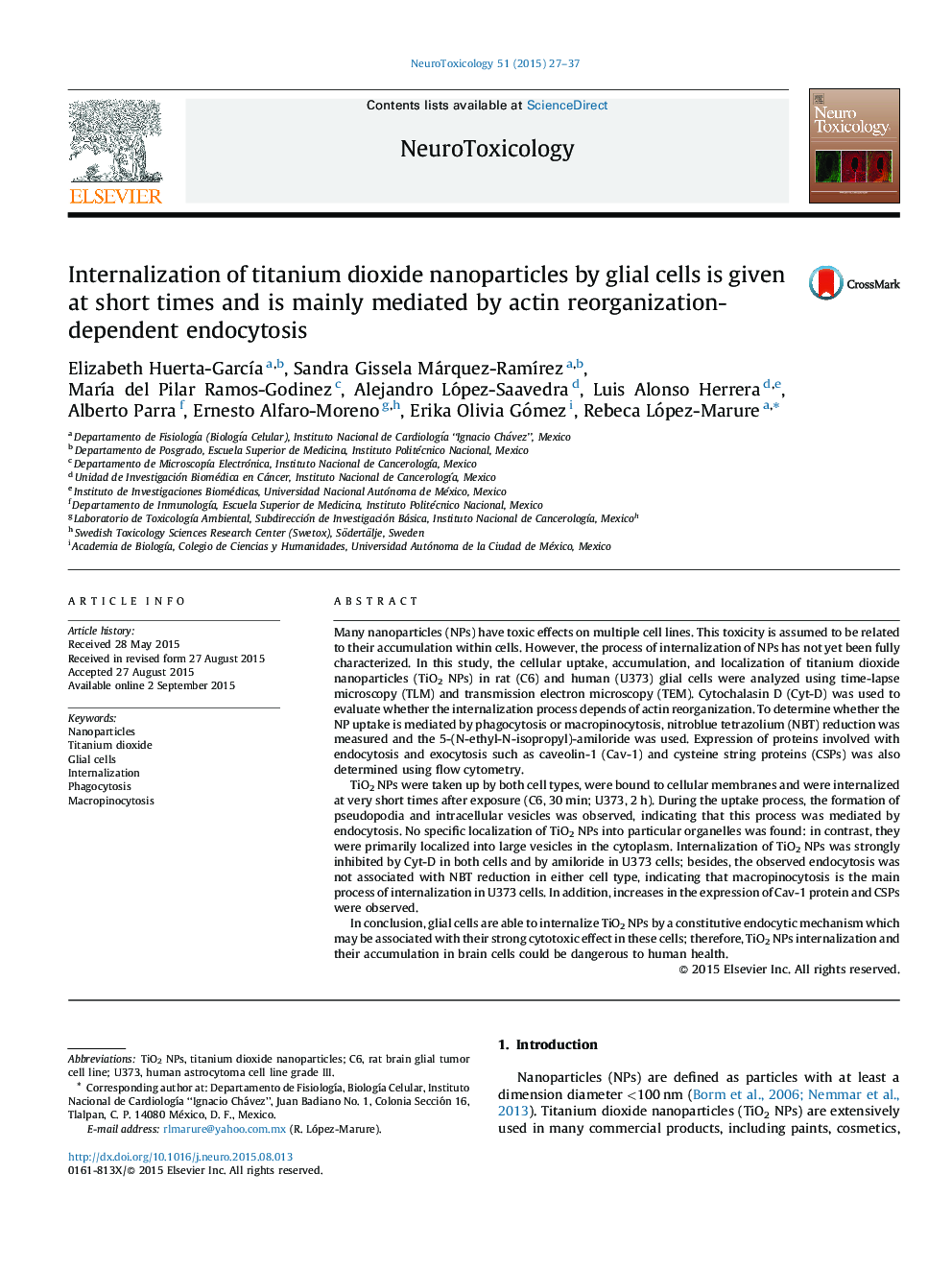| کد مقاله | کد نشریه | سال انتشار | مقاله انگلیسی | نسخه تمام متن |
|---|---|---|---|---|
| 2589463 | 1562043 | 2015 | 11 صفحه PDF | دانلود رایگان |
• Titanium dioxide nanoparticles (TiO2 NPs) were internalized at early times by glial cells, independent of the species.
• TiO2 NPs were internalized mainly mediating macropinocytosis. TiO2 NPs were accumulated in the cytoplasm of cells.
• We suggest that long term exposure to TiO2 NPs in humans, could induce cerebral damage and neurodegenerative diseases.
Many nanoparticles (NPs) have toxic effects on multiple cell lines. This toxicity is assumed to be related to their accumulation within cells. However, the process of internalization of NPs has not yet been fully characterized. In this study, the cellular uptake, accumulation, and localization of titanium dioxide nanoparticles (TiO2 NPs) in rat (C6) and human (U373) glial cells were analyzed using time-lapse microscopy (TLM) and transmission electron microscopy (TEM). Cytochalasin D (Cyt-D) was used to evaluate whether the internalization process depends of actin reorganization. To determine whether the NP uptake is mediated by phagocytosis or macropinocytosis, nitroblue tetrazolium (NBT) reduction was measured and the 5-(N-ethyl-N-isopropyl)-amiloride was used. Expression of proteins involved with endocytosis and exocytosis such as caveolin-1 (Cav-1) and cysteine string proteins (CSPs) was also determined using flow cytometry.TiO2 NPs were taken up by both cell types, were bound to cellular membranes and were internalized at very short times after exposure (C6, 30 min; U373, 2 h). During the uptake process, the formation of pseudopodia and intracellular vesicles was observed, indicating that this process was mediated by endocytosis. No specific localization of TiO2 NPs into particular organelles was found: in contrast, they were primarily localized into large vesicles in the cytoplasm. Internalization of TiO2 NPs was strongly inhibited by Cyt-D in both cells and by amiloride in U373 cells; besides, the observed endocytosis was not associated with NBT reduction in either cell type, indicating that macropinocytosis is the main process of internalization in U373 cells. In addition, increases in the expression of Cav-1 protein and CSPs were observed.In conclusion, glial cells are able to internalize TiO2 NPs by a constitutive endocytic mechanism which may be associated with their strong cytotoxic effect in these cells; therefore, TiO2 NPs internalization and their accumulation in brain cells could be dangerous to human health.
Journal: NeuroToxicology - Volume 51, December 2015, Pages 27–37
